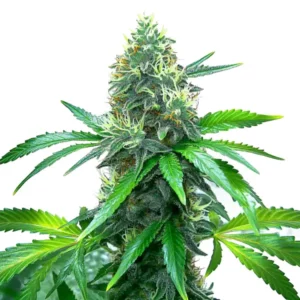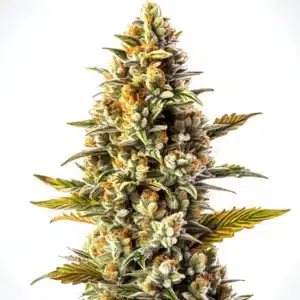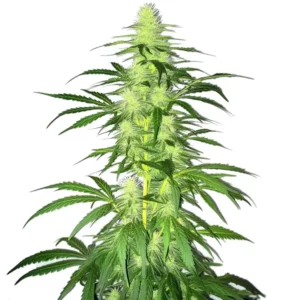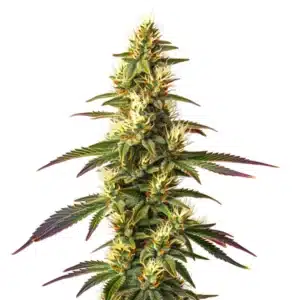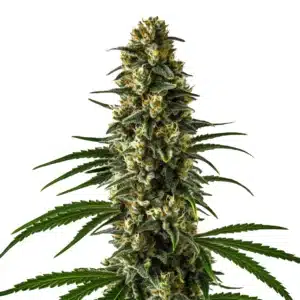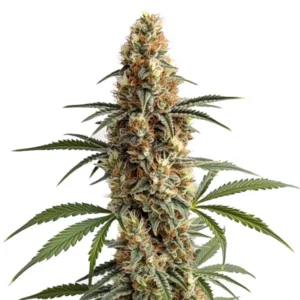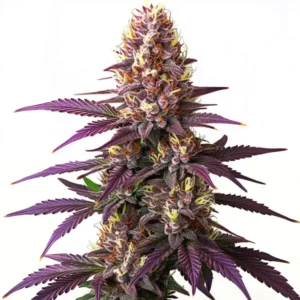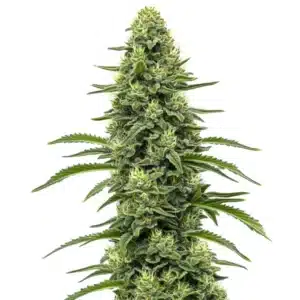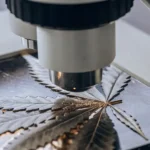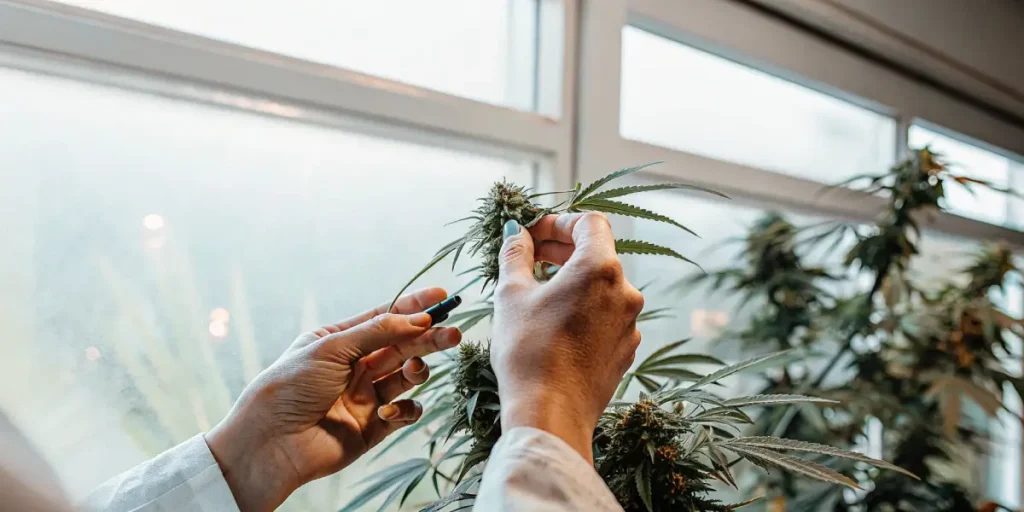
How to Mainline Cannabis Plants
Mainlining cannabis plants is a popular technique for maximizing yields and ensuring uniform growth. This method involves creating a symmetrical structure for your plant, which allows for even distribution of nutrients and light. By following a step by step guide to mainlining cannabis, you can achieve a more efficient growth process. This technique is suitable for both beginners and experienced growers who want to enhance their cultivation skills.
When learning how to mainline cannabis plants, it’s essential to start with the right strains. Strains like Blue Dream, Girl Scout Cookies, and OG Kush from Blimburn Seeds are known for their robust growth characteristics, making them ideal candidates for mainlining.
Recommended Strains
Blue Dream
|
|
THC | 17% - 24% (Medium) |
|
|
Type | Feminized |
|
|
Yield | High |
|
|
Phenotype | 50% Indica / 50% Sativa |
OG Kush
|
|
THC | 20% - 24% (Medium) |
|
|
Type | Feminized |
|
|
Yield | Medium |
|
|
Phenotype | 55% Indica / 45% Sativa |
Getting the hang of how to mainline cannabis plants requires patience and practice. This technique is all about controlling the plant’s growth to improve yields and quality. With the right approach, mainlining can significantly enhance your cannabis cultivation experience.
Step by Step Guide to Mainlining Cannabis
The first step in mainlining involves topping the plant. Topping is the process of cutting the main stem to encourage the plant to grow two colas instead of one. This should be done when the plant has about 5-6 nodes, which are the points where leaves attach to the stem. By cutting just above the third node, you encourage the plant to focus energy on lateral growth.
Next, you need to tie down the new branches to create a flat, even canopy. This step is crucial in how to mainline cannabis plants for beginners because it ensures that light reaches all parts of the plant equally. Using soft plant ties, secure the branches horizontally. This setup promotes uniform bud development and maximizes light exposure.
After the initial tying, it’s important to continually monitor the plant’s growth and adjust the ties as necessary. This ongoing maintenance is a key aspect of the step by step guide to mainlining cannabis. Regularly check for new growth that might disrupt the canopy’s evenness and respond accordingly. This will maintain the plant’s health and promote balanced growth.
Additionally, as you progress with how to mainline cannabis plants, ensure that the environment remains optimal for growth. Factors such as light intensity, temperature, and humidity can greatly affect plant health. Keeping these environmental conditions stable will complement the structural benefits of mainlining and encourage higher yields.
Maintaining the Structure
Keeping the plant structure symmetrical is key in mainlining cannabis plants for higher yields. Regularly prune excess leaves and branches that do not contribute to the main colas. This helps the plant focus its energy on producing larger buds.
Monitor the plant’s growth and adjust the ties as needed. As the plant grows, branches may need to be repositioned to maintain the even canopy. Consistent attention to the plant’s shape will result in a more productive and manageable growth.
Another crucial aspect of maintaining the structure is ensuring that the plant receives adequate support as it matures. The weight of the buds can cause branches to droop, so additional stakes or a trellis may be necessary to keep everything in place. This support minimizes stress on the plant and prevents breakage.
Furthermore, mainlining cannabis plants for higher yields involves a careful balance of pruning and growth encouragement. While pruning is necessary, it shouldn’t compromise the plant’s ability to photosynthesize. Aim to maintain enough foliage to support the plant’s energy requirements, ensuring robust growth and development.
Promos & Deals
Benefits of Mainlining Cannabis Plants
Mainlining offers numerous advantages, including increased yield and improved bud quality. By creating a uniform structure, each bud site receives equal amounts of light and nutrients. This results in more consistent growth and larger, denser buds.
Another benefit is the ease of maintenance. A well-mainlined plant is easier to water, prune, and inspect for pests or diseases. This streamlined approach makes it simpler to manage your cannabis garden, particularly for growers with multiple plants.
The benefits of mainlining cannabis plants extend beyond yield and maintenance. This technique also enhances plant health by improving airflow and reducing the risk of mold and pests. With a more open structure, air can circulate freely around the plant, creating a healthier growing environment.
Moreover, mainlining cannabis plants for higher yields can also improve the plant’s resilience to environmental stressors. By directing energy to the main colas, the plant becomes more efficient in its growth and resource utilization, leading to stronger and more robust plants capable of withstanding fluctuations in growing conditions.
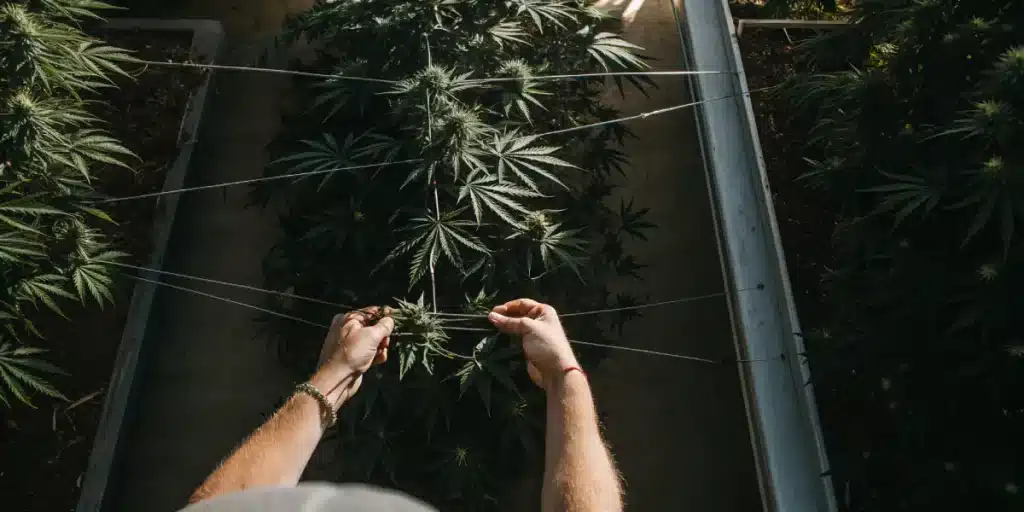
Optimizing Nutrient Distribution
With mainlining, nutrient distribution is optimized. The plant’s energy is directed toward the main colas, reducing wastage on unnecessary foliage. This focused growth ensures that your plant’s resources are used efficiently, enhancing overall health and productivity.
This method also reduces the risk of mold and pests, as the open structure improves airflow around the plant. Better air circulation helps keep the plant healthy and thriving, especially in humid environments.
Optimizing nutrient distribution is a critical component of how to mainline cannabis plants for beginners. By guiding nutrients to where they are needed most, the plant can develop stronger stems and more substantial buds. This not only boosts yield but also improves the overall quality of the harvested product.
Mainlining also supports the plant in combating nutrient imbalances. By ensuring a more even distribution, the risk of deficiencies or toxicities is minimized. Beginners can particularly benefit from this aspect, as it provides a more forgiving approach to managing nutrient levels.
Common Mistakes in Mainlining Cannabis Plants
One common mistake is topping the plant too early. Topping should only be done when the plant has developed at least 5-6 nodes. Topping prematurely can stunt growth and reduce potential yields.
Another mistake is improper branch tying. Tying branches too tightly can damage the plant and impede nutrient flow. Always use soft ties and adjust them as the plant grows to prevent constriction.
Overlooking the importance of regular monitoring is another frequent error in how to mainline cannabis plants. Failing to adjust ties and prune as needed can lead to uneven canopy development and reduced yields. Regular checks ensure that the plant maintains its optimal structure and growth pattern.
Additionally, neglecting to consider the plant’s overall health can lead to setbacks. Stress from improper techniques or environmental conditions can hinder progress. Ensuring that the plant is not only structured well but also healthy and stress-free will support a successful mainlining process.
Avoiding Over-pruning
Over-pruning is a frequent error. While it’s important to remove unnecessary growth, taking away too many leaves can hinder photosynthesis. The plant needs enough foliage to create energy and support growth.
Be mindful of the plant’s overall health. Stress from excessive pruning can slow down development and make the plant vulnerable to diseases. Aim for a balance between removing excess and maintaining sufficient leaf coverage.
To avoid over-pruning, it’s essential to understand the plant’s growth patterns and needs. Observing the plant and responding appropriately to its development stages will help in maintaining the right balance of leaf coverage and bud exposure.
When implementing a step by step guide to mainlining cannabis, always err on the side of caution. Removing too little is often better than taking away too much. As you gain more experience, you’ll develop a better sense of how much pruning is appropriate for each plant.
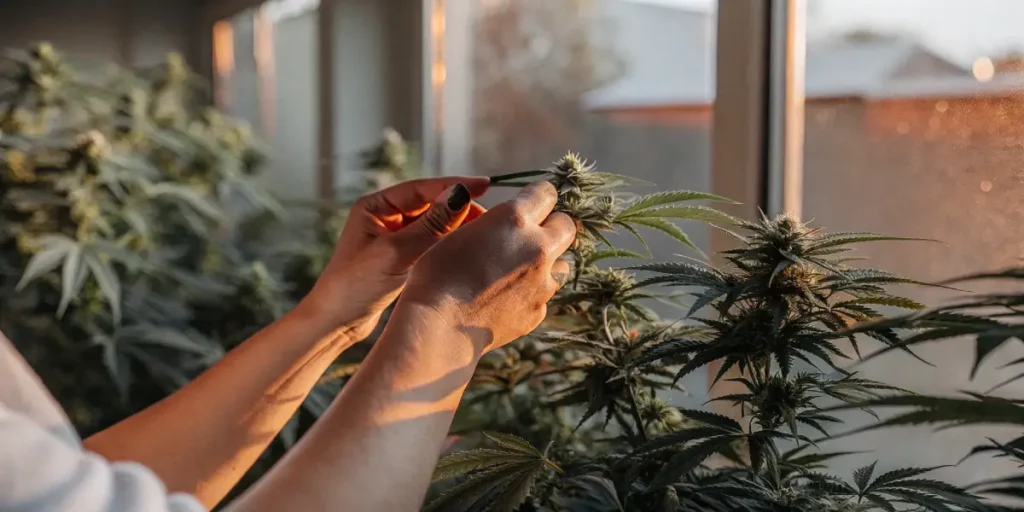
FAQs
What is the best time to start mainlining cannabis plants?
The best time to start mainlining is when the plant has developed 5-6 nodes. This ensures that the plant is strong enough to handle the stress of topping and tying. Starting too early can result in stunted growth, while waiting too long might make the plant harder to train.
Monitor your plant’s growth closely. Once it reaches the right stage, proceed with topping and tying. This timing is crucial for setting the stage for successful mainlining and maximizing yield potential.
Knowing the plant’s development stage is crucial for determining the right moment to start mainlining. The nodes serve as indicators of the plant’s readiness, ensuring that it has the resilience to thrive post-training. This approach is especially beneficial for beginners learning how to mainline cannabis plants.
If you’re unsure about the plant’s readiness, it’s better to wait until the plant is more mature. Patience at this stage can prevent potential setbacks and ensure a smoother transition to the training phase.
Can mainlining be used for all cannabis strains?
Most cannabis strains can benefit from mainlining, but some are better suited for the technique. Strains with strong, resilient growth patterns, such as OG Kush, are ideal candidates. These strains respond well to training and produce excellent results.
However, some strains with naturally sparse growth may not require mainlining. Assess your strain’s characteristics before starting. With the right strain, mainlining can significantly improve yield and quality.
For growers interested in learning how to mainline cannabis plants for beginners, selecting the appropriate strain is a critical first step. Researching strain characteristics and growth habits will help in choosing those that thrive under mainlining techniques.
Keep in mind that each strain may respond differently. Experimenting with different strains and observing their responses can provide valuable insights into which are best suited for mainlining in your specific growing environment.
How does mainlining affect the flowering stage?
Mainlining can positively impact the flowering stage by ensuring even light distribution and nutrient allocation. This leads to more uniform bud development and larger yields. The symmetrical structure also makes it easier to manage the plant as it matures.
During flowering, continue to monitor and adjust ties as needed. Keeping the canopy even ensures that all bud sites receive adequate light, resulting in a more productive flowering phase.
The effects of mainlining during the flowering stage are significant in terms of both quality and yield. By optimizing the plant’s structure, growers can achieve a more consistent crop with buds that mature evenly, reducing the need for staggered harvesting.
Additionally, the benefits of mainlining cannabis plants include enhanced accessibility during the flowering phase. With a well-structured plant, tasks such as pruning, pest management, and inspecting bud development become more manageable, contributing to a healthier overall harvest.
Is mainlining suitable for indoor and outdoor growing?
Mainlining is a versatile technique that can be used for both indoor and outdoor growing. The method helps control plant size, making it ideal for indoor setups with limited space. Outdoor growers can also benefit from mainlining by optimizing sun exposure and airflow.
For indoor growing, ensure your lights are positioned to cover the entire canopy evenly. Outdoor growers should regularly check their plants to maintain the desired structure and adjust for natural light conditions.
Whether growing indoors or outdoors, mainlining offers the advantage of adaptability. Indoor growers can utilize this technique to maximize the efficiency of light usage, while outdoor cultivators can harness natural sunlight more effectively.
Moreover, the benefits of mainlining cannabis plants are evident in diverse environments. By tailoring the approach to specific growing conditions, both indoor and outdoor growers can leverage this technique to achieve impressive results, regardless of the setting.
What are the biggest challenges when mainlining cannabis plants?
One of the biggest challenges is maintaining the even canopy as the plant grows. Regular adjustments and monitoring are required to keep the plant’s structure balanced. This can be time-consuming but is essential for achieving the best results.
Another challenge is avoiding stress to the plant. Topping and tying can be stressful, so it’s important to handle the plant carefully. Providing adequate nutrients and maintaining a good growing environment will help minimize stress and support healthy growth.
Knowing the intricacies of how to mainline cannabis plants for beginners can help mitigate some of these challenges. Beginners should pay close attention to the plant’s response after each step of the process to ensure that it is adapting well to the changes.
Additionally, patience and persistence are key. The process requires a commitment to regular maintenance and observation. However, overcoming these challenges can lead to a rewarding cultivation experience with higher yields and improved plant health.



